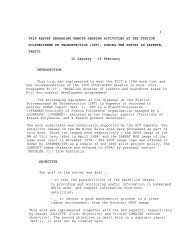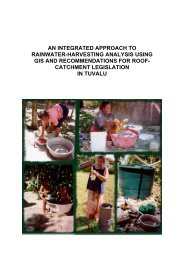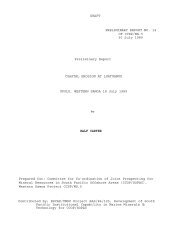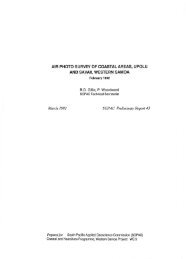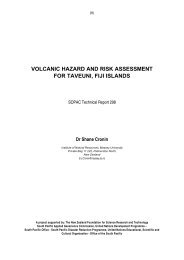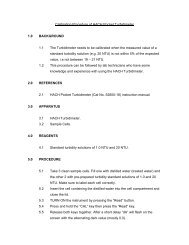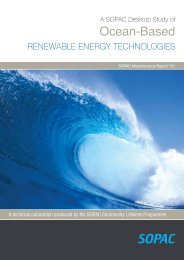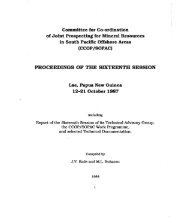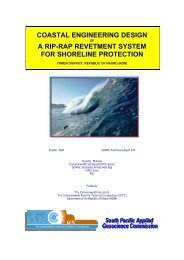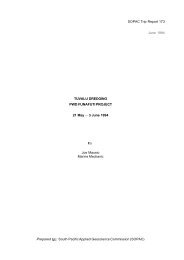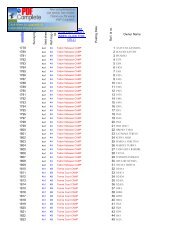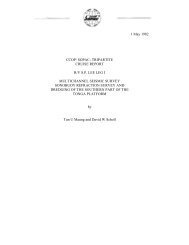Rural water supply and water demand ... - Up To - SOPAC
Rural water supply and water demand ... - Up To - SOPAC
Rural water supply and water demand ... - Up To - SOPAC
Create successful ePaper yourself
Turn your PDF publications into a flip-book with our unique Google optimized e-Paper software.
[5]<br />
• Though community ownership seems to be the only viable solution some thoughts should<br />
be given whether regular maintenance <strong>and</strong> minor spare parts (eg washers) should be<br />
provided. This could be supported by a <strong>water</strong> committee that collects a very modest<br />
connection fee.<br />
• RWSS should purchase essential <strong>water</strong> <strong>supply</strong> system monitoring equipment, ie a<br />
portable flowmeter, pressure reader connectable to hydrants <strong>and</strong> taps, a pressure<br />
transducer to read <strong>and</strong> log <strong>water</strong> levels in tanks <strong>and</strong> reservoirs <strong>and</strong> basic leak detection<br />
tools, eg listening sticks. (see also Appendix 3 for more details.)<br />
• RWSS need to stiffen building st<strong>and</strong>ards <strong>and</strong> measure system performance right after<br />
project completion.<br />
• RWSS should develop a leakage policy that applies to all systems or at least to all<br />
system implemented from a certain size on (eg population connected). Compliance<br />
should be monitored by rotating equipment between field staff <strong>and</strong> non-compliance<br />
should trigger remedy actions in coordination with the <strong>water</strong> committee.<br />
• Though outside the scope of this trip RWSS should re-think current practice of providing<br />
<strong>water</strong> without looking (or providing) adequate sanitation.<br />
Prior to the trip, RWSS identified the <strong>water</strong> <strong>supply</strong> systems villages of Mele/Mele-Maat as a<br />
pilot area. During the trip some WDM measurements could be carried out in the respective<br />
area indicating that the Minimum Night Time Flow was around 6 l/s. Assuming a constant<br />
inflow into the tank of about 8.7 l/s (derived from measurements <strong>and</strong> calculations) <strong>water</strong><br />
losses would amount to about 68 % of the production. Even though it was not possible to<br />
confirm this result with more <strong>and</strong> longer-lasting measurements (bad weather <strong>and</strong> equipment<br />
failure due to the bad weather) current 'operation procedures' confirm (artificial) <strong>water</strong><br />
shortages (no 24 hour <strong>water</strong> <strong>supply</strong>.) These shortages are attributable not only to leakage<br />
but also to massive over-sizing of the system. (Admittedly a problem rather uncommon in the<br />
Pacific.)<br />
• The problem could be solved by installing a flow control valve at the end of 150 mm GI<br />
trunk main.<br />
[MR351 - Schölzel]



